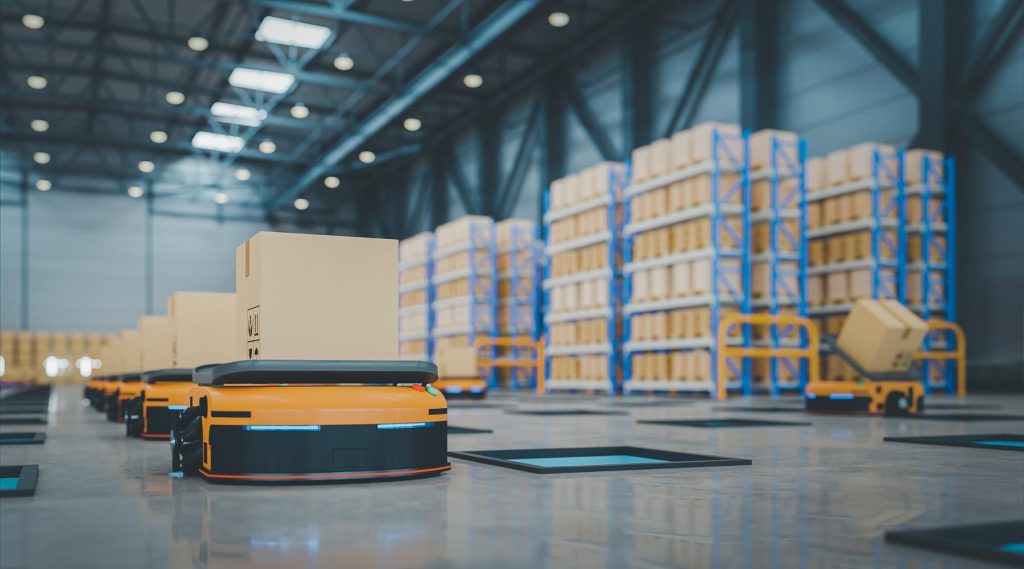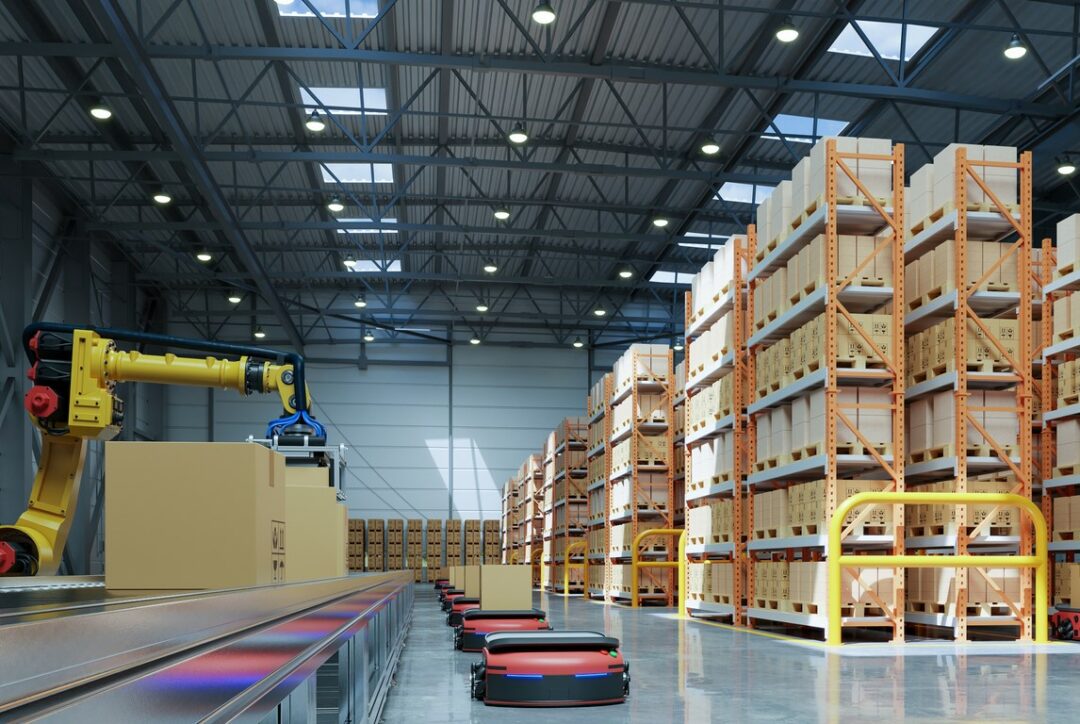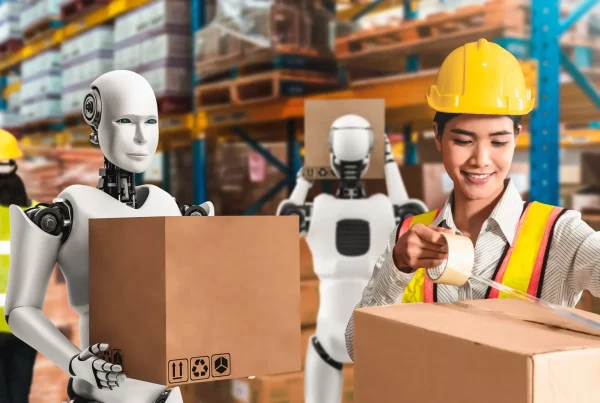Introduction
The last step of a product’s journey from warehouse to the customer’s hands, known in the logistics business as last-mile delivery, has always been the most complicated and costly part of e-commerce. It is responsible for over half of total delivery costs and is notoriously cumbersome, with factors such as traffic and failed deliveries posing significant obstacles. To overcome these challenges, companies are increasingly turning to robotics to develop faster, smarter, and more cost-effective logistics solutions that meet the expectations of today’s demanding consumer.
A Technological Leap Forward
Robotics are transforming last-mile delivery from a traditional, human-powered process to a high-tech, fully automated one. Companies are experimenting with a wide range of robotic systems, from ground-based autonomous delivery vehicles and sidewalk robots to aerial drones. These are the kind of machines equipped with sensors, GPS, and AI that the company hopes to use to navigate city streets efficiently, avoiding crashes and delivering packages directly into customers’ hands.
Reinvention of Speed and Efficiency
Robotic delivery technologies drastically reduce delivery service times by eliminating human constraints, including fatigue, scheduling, and routing inefficiencies. Robots can be used at any time of day or night and can be dynamically adapted to traffic conditions and weather. Drones can also sidestep ground traffic altogether, reducing delivery times in urban settings from hours to minutes. Fewer delays and better routing mean that your customers receive orders faster and more reliably than ever.
Cost-Saving Advantages
Labour is a primary cost factor in last-mile logistics. This significantly reduces these costs by eliminating the need for a human courier. Once robots are installed, they result in lower operational costs compared to wages, benefits, and the management of human resources. Additionally, fewer missed deliveries and returns also result in more cost savings. For companies, this means a scaled, more profitable operation, with consumers enjoying lower shipping costs.
Overcoming Challenges
While there are benefits, there are also obstacles to the widespread use of robots for last-mile delivery. The regulatory restraints, especially those related to drones, vary across different locations, which can hinder deployment. There are also concerns about safety, theft, and the potential for job losses. Yet, many of these challenges are being mitigated through improved technology, increased community engagement, and the development of more effective policy toolkits.

Smart Infrastructure Integration
As cities become smarter, the systems that shuttle people and goods around them will have to become smarter too. Smarter logistics are becoming an integral part of cities, thanks to technologies such as IoT-enabled traffic infrastructure, smart lockers, and AI-driven mapping. These integrations enable delivery robots and warehouse robotics systems to interact with city infrastructure, resulting in more efficient route planning, safer navigation, and smoother transfers where the package is handed off at the destination. In the smart cities of tomorrow, robotic couriers and warehouse robotics won’t be idle; they’ll be key players in a digital landscape of interconnectivity.
Customized Delivery Experiences
The future of on-demand delivery and logistics Robotics is helping next-generation delivery personalize the customer experience. Simply, robots can inform their customers of estimated arrival times, adjust routes in real-time, and even provide secure deliveries in person or contactless, using facial recognition or a unique QR code. These custom touchpoints enhance customer satisfaction and loyalty, which is crucial in a world where consumers increasingly prioritize convenience and control.
Data-Driven Optimization
One of the most beneficial impacts of robotic delivery systems is the data they generate. Each journey, delivery interaction, and environmental condition is recorded and replayed to improve the robot’s future runs. This live data loop can help companies optimise routes, forecast delivery patterns, and predict maintenance needs. Eventually, this not only improves efficiency but also lays the groundwork for predictive logistics, where delivery systems anticipate customer behaviour and external factors.
Democratising Delivery Access
The robot-delivery future isn’t just a novelty enjoyed by tech-savvy urbanites; it’s a new frontier for democratising access to critical goods. Especially in rural areas or where existing delivery infrastructure is limited, drones and ground robots can be used to fill service gaps that are not economically viable with traditional means. Medical supplies, groceries, and packages could be delivered to remote communities more quickly and with greater certainty, which could help thousands of people become more included in the digital economy.
Consumer Trust and Adoption
Consumer confidence, like with all new technologies, is crucial to the global adoption of new technologies. The novelty of receiving packages from robots might generate some initial buzz, but sustained success hinges on reliability, safety, and convenience. Businesses that prioritise transparent communication, seamless usability, and exceptional customer service are better positioned to cultivate long-term trust with their consumers.
Regulatory Evolution and the Policy Process
The future of robot last-mile delivery depends not just on technology, but also on regulatory advancements. It is time for governments and cities to develop policies that strike a balance between safety, innovation, and the public interest. These rules encompass issues such as who can fly on sidewalks, which areas are designated as drone-free zones, and concerns regarding privacy and liability. Innovative legislation to advance testing and deployment, along with crucial ethical and legal considerations, will be essential for nurturing a thriving robotics ecosystem in logistics.
The Inevitable Shift
What sounded like science fiction is quickly becoming the new normal. The rise of robotics in last-mile delivery is not a fad, but a fundamental shift in how goods will move around the world. Companies that get in early are positioning themselves to be ahead in two of the key drivers of modern commerce: speed and savings. Robotic delivery won’t just be the norm; it will be a necessary means to keep up with the 2025 style of commerce as the technology becomes mainstream and the rules become more flexible—after all, you can’t bring the customer to you, so get your product to the customer.

A Smarter Tomorrow in Motion
Robotics is revolutionising last-mile delivery at the ground level, making it faster, cheaper, and more efficient than ever before. Experimental technology has evolved into a workable and scalable solution for the problems that cause much of headaches for modern logistics. With innovation driving faster progress and society becoming increasingly accustomed to automation, robotic delivery could ultimately become one of those things that becomes an invisible thread in everyday life. The future is not just arriving, it is right at your door.
New Jobs and New Demands on Skills
Even though automation may displace many traditional delivery jobs, robotics is generating new types of work. Roles in robot maintenance, AI programming, remote operations, and logistics analytics are in greater demand. And it’s contributing to the development of a technologically literate workforce. With job roles changing, training programs and reskilling have taken centre stage in efforts to enable the labour force to transition into new roles that characterise technological disruptions.
Resilience During Crises
If nothing else, the COVID-19 crisis has underscored the need for robust, contactless delivery methods. Robotics proved to be an essential part of the lockdowns, enabling deliveries that required minimal human interaction. This agility is now understood to be an important advantage not only for pandemics, but also for natural disasters, strikes, or any circumstance in which human-operated logistics falter. Robotics is also a matter that is very close to our hearts in uncertain times.
Brands as A Key Differentiator
In a crowded world of e-commerce, companies are always seeking ways to stand out. Robotic last-mile delivery is a powerful differentiator, a symbol of innovation, trust, and modern customer service. Robot delivery is trendy.. Robots deliver with a wow factor to get people talking and boost brand appeal. In the long run, what all of this ultimately amounts to is not a logistical improvement, but a strategic business advantage.
The Road Ahead
Robots and logistics are not yet in full embrace, but they are on the road to the altar. As robotic automation continues to evolve, robotic delivery is poised to transform massive cities all over the world, especially as supporting infrastructure is established. The companies that get in the game early can not only differentiate themselves but also transform the customer experience in the digital era.
🚀 Stay updated on the latest in robotic logistics, automation trends, and smart delivery solutions, follow us on Instagram for exclusive content, behind-the-scenes innovations, and real-world success stories. Join the conversation and see how the future of delivery is unfolding, one robot at a time!





